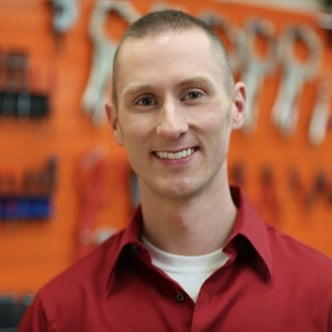Design and the Environment
As a product design firm, we strive to make the best and longest-lasting products possible. We aim to make successful products that fulfill the customer’s needs and requirements while maintaining some element of beauty. This, as expected, requires an extensive amount of planning, research, prototyping, foresight, and knowledge of the consumer base.
End-of-Life
What many people don’t often think of when they envision product design is the end-of-life. What happens when a product wears out or is no longer useful? Can the user quickly and easily disassemble the product and toss it in their curbside recycling bin? Will you, the producer, provide a service to receive used parts and properly dispose or recycle them? If not, are there readily accessible facilities that will dispose of or recycle your product properly?
Mass Production
Not planning for the product’s end-of-life is a common mistake that every engineer (myself included) will make. For production that includes any form of volume manufacturing, not only is this an oversight, it is ecologically irresponsible. As producers and designers, it is our responsibility to make products that are as earth-friendly as possible. Whether this is a responsibility to future generations, to the planet, or simply to our own future, it is imperative that we plan for obsolescence. No matter how durable and timeless we make a product, nothing will last or remain untarnished forever.
Material Selection
In planning for obsolescence, it is wise to use as many recyclable and biodegradable parts as possible—and to use as little material as possible. When possible, one should evaluate the resources available to the customer base. Many towns’ recycling programs readily accept class 7 recyclables, as in Boulder, but some facilities don’t offer options for these “other” plastics. Designing for compatibility with current products and maintaining backwards compatibility also makes sure that your new design doesn’t inadvertently cause the disposal of otherwise useful products. The USB connector standard is a good example of this sort of backwards compatibility. If you could no longer use your USB2.0 devices (phone, mp3 player, etc) with your USB3.0-enabled computer, then your computer would be causing the obsolescence and possibly early disposal of other devices. Fortunately, this is not the case!
Planned Obsolescence
On the other side of things, we have what I consider to be a dirty phrase (and a fairly dirty practice concerning waste generation): planned obsolescence. Often, short-term planned obsolescence is what happens when a greedy business and marketing team hijack the design process. Instead of subsisting on consistent sales and upgrades of a good long-lasting product, companies that rely on short-term planned obsolescence purposely design products that won’t last long. Take smartphones in the US for example: according to TheEcologist.org, we replace our phones every 22 months! Apple products, including the iPhone, are some of the best examples of products designed to expire. Instead of using a common charging port (like microUSB), Apple uses a proprietary data/charging port that forces its users to buy new accessories. If Apple releases a phone with a different style port, suddenly all the old power accessories are made obsolete. Similarly, their products use lithium batteries that are not user-serviceable despite having a typical lifespan of less than two years. For many non-tech users, this means paying for a “genius” to replace their battery, or just upgrading to the new model since they have to spend some money anyway. Want to increase your phone's storage capacity? Well, adding a large capacity SD card is not possible, so you’ll just have to get a new phone!
Preparing for a Product’s End-of-Life vs Causing it
In any case, planning for obsolescence is inherently different than “planned obsolescence” and inherently more ecologically responsible. Unfortunately, short-term planned obsolescence is a great business model to feed a large and growing corporation. With over 4 pounds of waste generated per American per day, on average, planning for a product’s end-of-life needs to be an important part of the design cycle.
Interested in learning more about Boulder Engineering Studio? Let's chat!
For locals here in Boulder, please check out the following facilities (if you haven’t already) that will help you dispose of products at their end-of-life:
CHaRM: Eco-Cycle’s Center for Hard-to-Recycle Materials
Boulder County’s Hazardous Waste Program (you can get free paint, cleaning supplies, and pool chemicals here!)
Also, be sure to check out Fairphone and Phonebloks, the more eco-friendly smartphones!
.svg)







